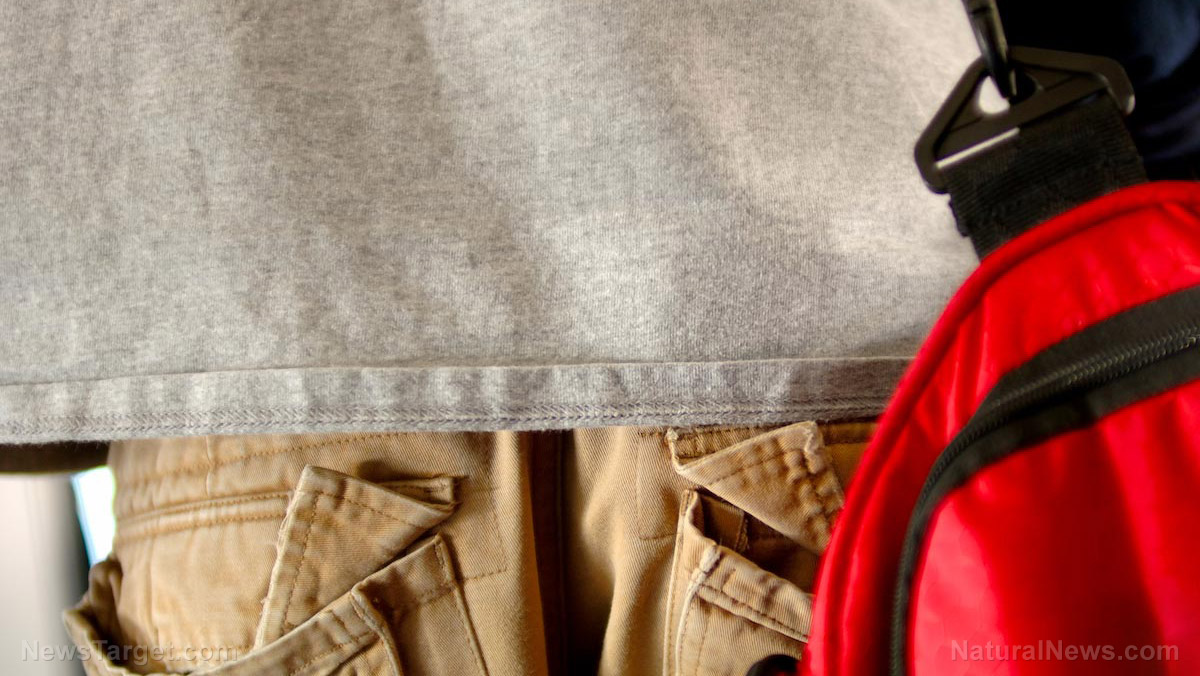If you had to, could you make your own shoes and clothes? Tips for rediscovering those skills
02/01/2018 / By Zoey Sky

Aside from foraging and food preservation, knowing how to make your own clothes and shoes is an important skill if you want to be ready when SHTF. You can’t always assume that you’re going to have access to new clothes during a disaster so brushing up on your hand sewing skills is something you should consider. (h/t to BioPrepper.c0m.)
In a survival situation, you might not be able to get new clothes or fabric, patterns, and tools to make clothing and shoes.
Making your own clothes
Our ancestors knew what they were doing because they made clothing from organic materials like “cotton, wool, hemp” with spinning wheels and looms. With the proper guidance, you can also learn how to make yarn from cotton or wool if you have a drop spindle or simpler equipment. (Related: 5 Survival lessons we can learn from people who haven’t had power in their homes for hundreds of years.)
You won’t even need a loom if you know how to knit. With a crochet hook or some knitting needles, you can make anything from hats to sweaters.
If you don’t know where to get modern clothing fasteners like hook and eyes, velcro, or zippers, sew some buttons on your handmade shirts. They don’t have to be the store-bought kind because if you know how to make buttons. You can use any material that you can poke at least two to four holes through like animal bone or wood.
For those who want to wear colored shirts, don’t worry. You can use pigment sources like berries to keep your handmade clothes as cheerful as your post-SHTF wardrobe.
Sponsored solution from the Health Ranger Store: Lab-verified Nascent Iodine solution is a dietary supplement that provides your body with supplemental iodine to help protect your thyroid during radiation exposure. Nuclear accidents such as Fukushima (or nuclear war) can expose your body to radioactive iodine-131, a dangerous radioisotope. Pre-loading your system with stable iodine occupies the iodine receptor sites on your organs, causing your body to naturally expel radioactive iodine you may have been exposed to through air, food, water or milk products. This defensive strategy is recommended by nearly all health authorities, worldwide, including the Nuclear Regulatory Commission. Discover more at this link.
After you figure out how to create textile dyes, they can be applied “directly to threads and yarns,” or you can make simple silk screen or wax coating systems to design fabrics. You also have the option to use tie-dye and other dying techniques.
When SHTF, you will need some tools to make coats, pants, shirts, and sweaters. Get used to making a lightweight blouse, then work your way up to the heavier fabrics that need to be made with “heavier threads and tighter stitches.” Prepare the following for your SHTF sewing kit:
- Crochet and knit-stitch sized guides for developing garment designs
- Crochet hooks (size 5 for lightweight, near-lace work, and size G for sweater-weight yarns)
- Flexible tape measure
- Hand sewing needles of different sizes
- Knitting needles
- Large brown paper bags to trace patterns on
- Large scissors for cutting fabric
- Leather punches
- Needle threader (optional)
- Pins
- Seam ripper
- Small scissors for cutting thread
- Specialized scissors for cutting through leather and other animal hides
- Spools for holding spun thread and animal sinew
- Tatting shuttle for lace-making
- Thimble
You will also need some wide rolls of fabric. If you’re not sure what to get, you can start with light, heavy, and waterproof materials. Include some extra shoelaces and other cords for emergencies.
Making your own shoes
When disaster hits, you can make the upper part of shoes from canvas, leather, or wood. If you want to make sturdier shoes, use the heaviest leather or canvas that you know how to make. Make sure you pair the heavier materials with some heavier threads or sinew so you can attach the upper and lower parts of the shoes.
In a SHTF scenario, it might be hard to get your hands on materials for soles like rubber and resin. In a pinch, you can substitute used or old tires for shoe soles.
Leather can be used to make shoes for “lighter duty wear.” It can also be made out of wood, especially if you can design a pair of shoes that have soles which are easy to replace.
To start making your own shoes, you only need basic tools so you can work with anything from fabric to wood or leather:
- Hammer
- Heavy scissors that can cut canvas and thick leather
- Leather hole punch
- Pliers
- Scraper
- Pattern
- Shoe form
It can be tempting to hoard a surplus of store-bought clothing and shoes, but you can easily replace them with items that you make with materials on hand. Be practical and prepare a set of the basic sewing and shoe-making tools for when SHTF. Knowing how to create your own clothing and shoes is not only rewarding, you can even use the end products for bartering.
If you want to learn more about preparedness gear for survival and self-reliance, read GEAR.news.
Sources include:
Tagged Under: clothes, Collapse, DIY, Gear, guides, hand sewing, homesteading, how to, how to make clothes, making clothes, off grid, preparedness, prepper, prepping, shoes, SHTF, survival, survival skills




















